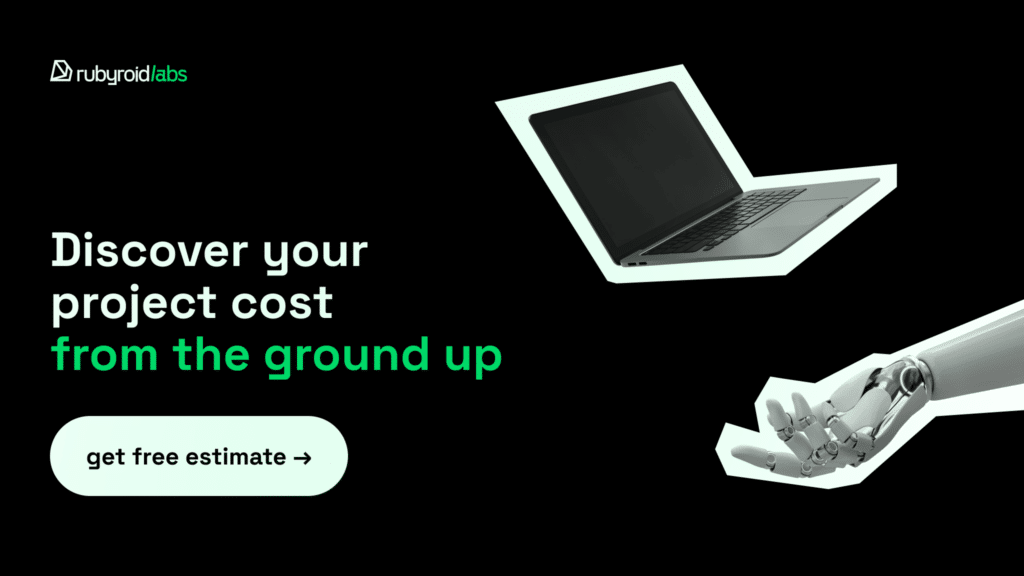No hype, just facts.
AI is already writing software side-by-side with developers. We can feel however we want about it, but the reality is that, according to the 2024 Stack Overflow Developer Survey, 82% of developers used AI in their work.
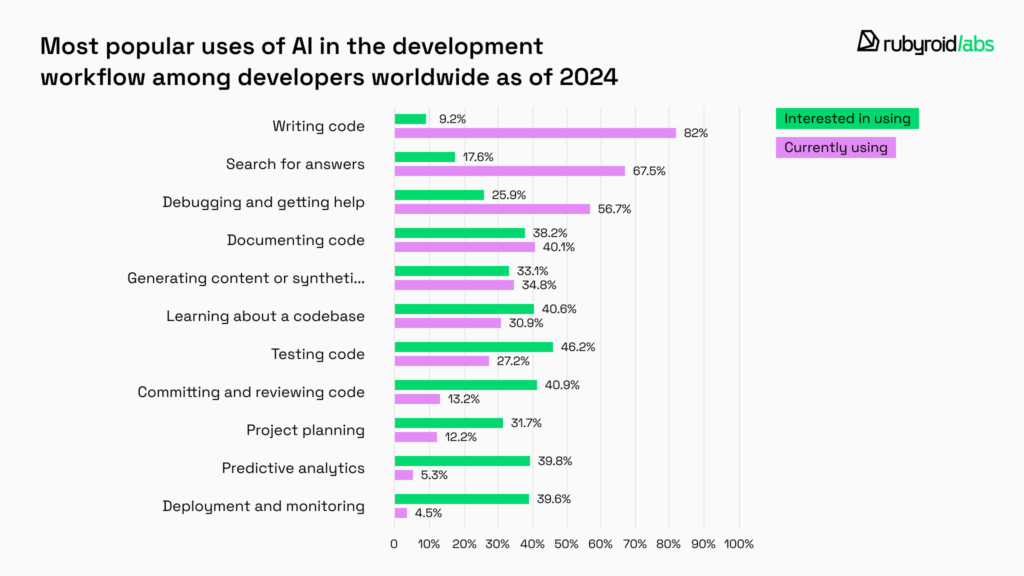
Some companies keep it quiet, others proudly announce it, but one thing is clear: more and more software is being built with help from AI.
As for us, we either can use artificial intelligence during development or build your product the traditional way. We’re always open to discussion, and stick to your specific requirements because your needs come first.
So, what’s the point of using AI in web development? How exactly does it help developers? And can it make projects faster and more affordable? You’ll get all the answers you need in this post.
Contents:
- Beyond Automation: How AI Development Tools Help Build Software
- What’s the Role of AI in the Development Lifecycle?
- Benefits of AI in Software Development
- Challenges and Limitations of Using Artificial Intelligence in Development Process
- The Future of Software Engineering with AI
- Wrapping Up
Beyond Automation: How AI Development Tools Help Build Software
At first glance, the software development process might seem simple and clear. You choose a language, pick a framework, and start writing code. With so many modern tools and libraries available, it can give the impression that most of the hard work is already solved.
In practice, though, developers face a wide range of challenges throughout the development lifecycle, many of which aren’t visible from the outside. For example:
- Ambiguous requirements, when the specs are incomplete or unclear and lead to guessing and rework.
- Third-party integration issues, where APIs change, documentation is missing, or behavior is inconsistent.
- Debugging and edge cases, with the bugs arising in unexpected ways, especially at scale or under specific conditions.
- Time-consuming research, when you need to find the best pattern, library, or approach to implement a feature, and it can take hours.
- Refactoring and tech debt, where you must improve existing code without breaking functionality and do it in a sharply right way.
In many of these situations, developers have to pause, dig into documentation, search forums, or experiment with solutions, often working alone to figure things out.
Even with great tooling, building software is rarely smooth from start to finish.
And in this case, artificial intelligence is a tool that can really help. No, it’s not a magic button that works while the developer grabs a coffee and a croissant. It doesn’t operate independently or replace the need for thoughtful engineering. But what it can do is take on a significant portion of the routine, time-consuming tasks, giving developers more room to focus on the complex, creative problems and business logic that actually matter.
Thus, we can say that AI in software development has two primary functions. They are:
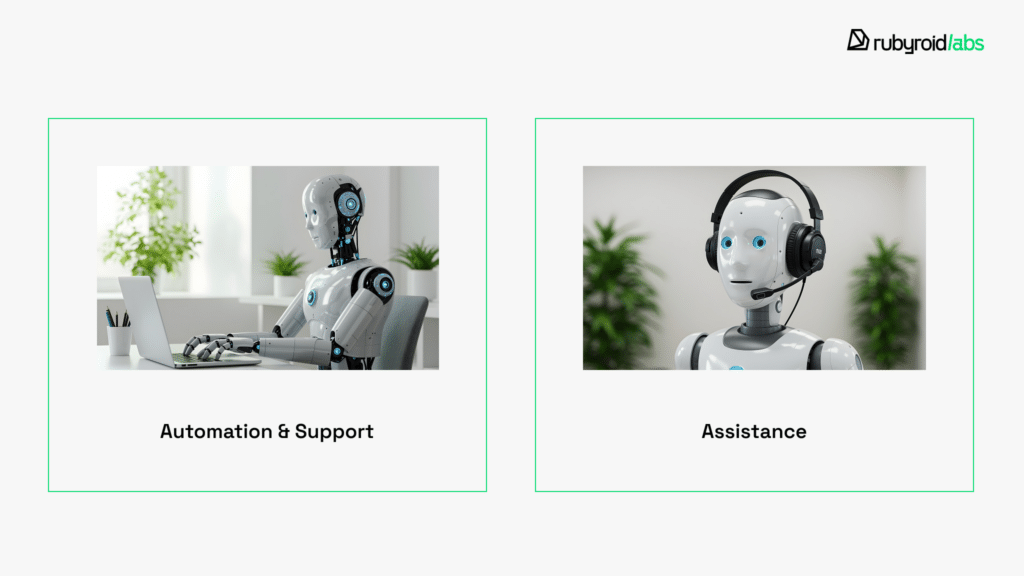
Automation & Support
While developers focus on crafting innovative solutions and core functionality, AI handles the time-intensive basics such as writing standard code, running tests, and maintaining consistent formatting. But that’s not all. AI also supports crucial non-coding tasks. For example:
- Creating clear documentation
- Conducting thorough code reviews
- Translating technical materials
Assistance
AI-powered tools serve as skilled coding companions, proactively spotting issues and offering smart solutions as developers work. By providing real-time suggestions and quick access to relevant resources, it cuts down debugging time and helps navigate technical hurdles more efficiently.
Plus, AI brings a fresh perspective to existing codebases, recommending ways to make them cleaner and faster based on industry best practices. As a result, more maintainable applications that require fewer fixes.
AI-powered workflows do not diminish human effort. We can say that it significantly boosts developer productivity by streamlining their workflow, making the entire development process more efficient and focused.

What’s the Role of AI in the Development Lifecycle?
As we’ve highlighted, AI plays a valuable role in automating development processes and supporting engineers in their everyday tasks. But its impact goes far beyond just speeding things up.
Let’s take a closer look at how AI fits into each stage of the software development lifecycle, from the first idea to ongoing support.
1. Requirement Analysis
Helping teams better understand business needs and requirements.
Before the development process begins, the team needs to analyze all the requirements, goals, and expectations shared by the project owner. Sometimes this information is written down in a document, but often it comes from call recordings, meeting notes, emails, or chat messages. Turning all of that into clear tasks and documentation can be time-consuming.
AI can help by reading this unstructured information and turning it into organized, easy-to-understand requirements. This saves time and helps ensure that nothing important is missed.
Some companies use AI tools to convert client emails or meeting notes directly into development tasks or product backlog items. Tools like ChatGPT or Atlassian Intelligence for Jira can help product managers quickly translate user feedback into specifications.
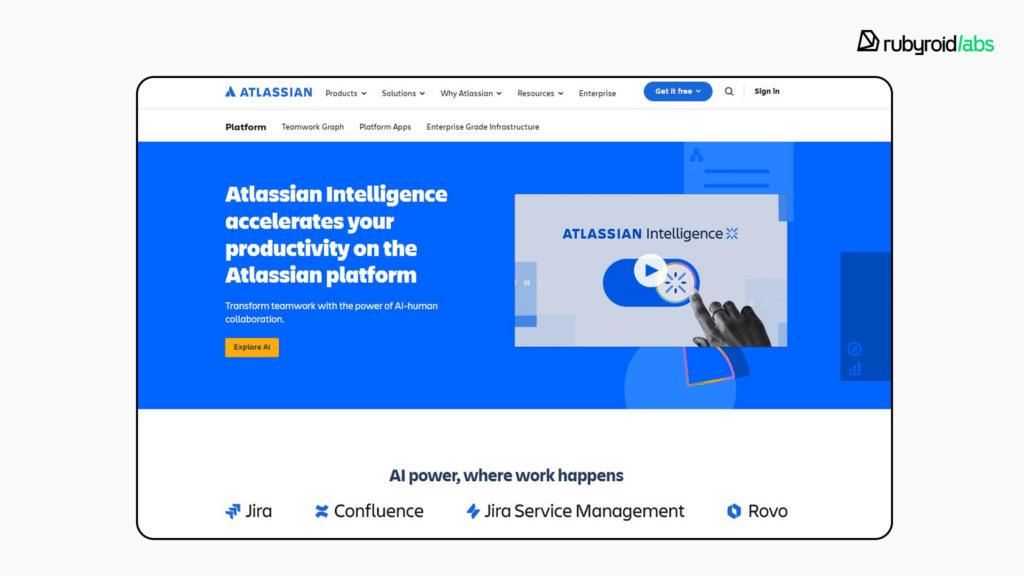
2. Design Assistance
Making smarter design decisions faster.
After all the needs and requirements are clear and the development roadmap is defined, it’s time for designers to arrange how the future system will look and work.
AI can assist in shaping system architecture, suggesting UI layouts, and flagging design choices that might impact performance or scalability. It’s also capable of simulating user flows to spot potential issues early in the development process.
For example, tools like Uizard transform simple sketches into interactive prototypes in minutes, while AWS Well-Architected Tool helps build robust backend systems based on proven practices.
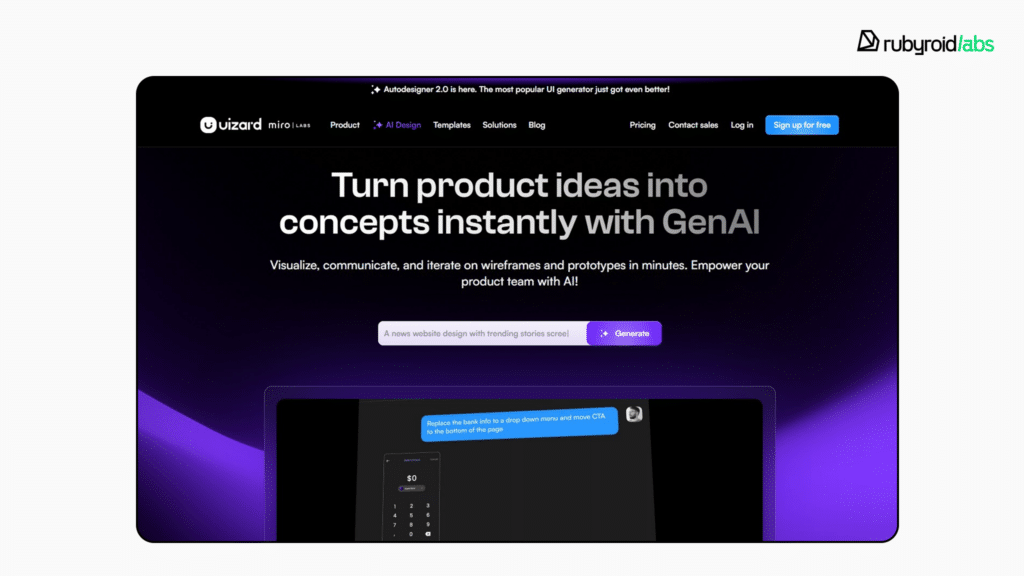
3. Code Generation
Reducing repetitive work and helping developers code faster.
Writing code often involves doing the same things over and over, like setting up buttons, forms, or database connections. AI tools can help by suggesting pieces of code, completing lines automatically, or even writing full functions based on a short description.
As a result, with AI-enhanced programming, developers can focus on solving complex tasks instead of writing boilerplate code.
In our practice, we sometimes use GitHub Copilot, powered by OpenAI. It works like an assistant inside the code editor, suggesting code in real time based on what the developer is working on. This helps speed up the development process.
Another tool we’ve used in one of our projects, Path Edits, is Cursor. It provides smart autocompletions and can generate code from text prompts. It’s especially helpful for spotting mistakes, refactoring code, and creating new code efficiently. With this tool, our developers increased their productivity on that project by 20%.
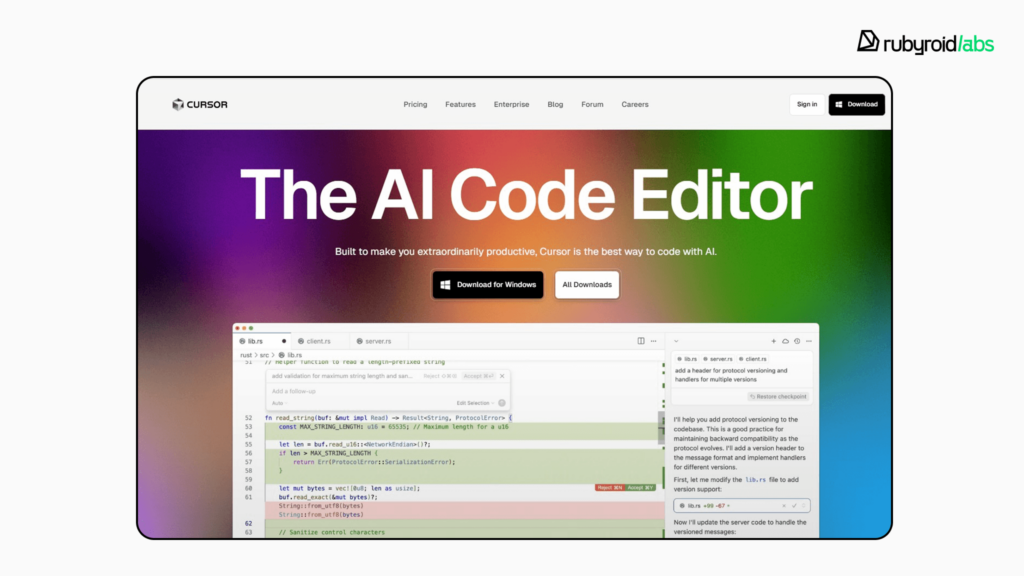
4. Testing
Ensuring the code works properly before it goes live.
Testing is about checking if everything in the software works as expected. AI can automate test creation, identify risky code areas, and prioritize tests based on likely failure points. It also helps generate synthetic test data that mimics real-world usage.
For instance, tools like Testim and Mabl use AI to build and update tests that follow the user interface, even when it changes, saving teams a lot of time on manual testing.
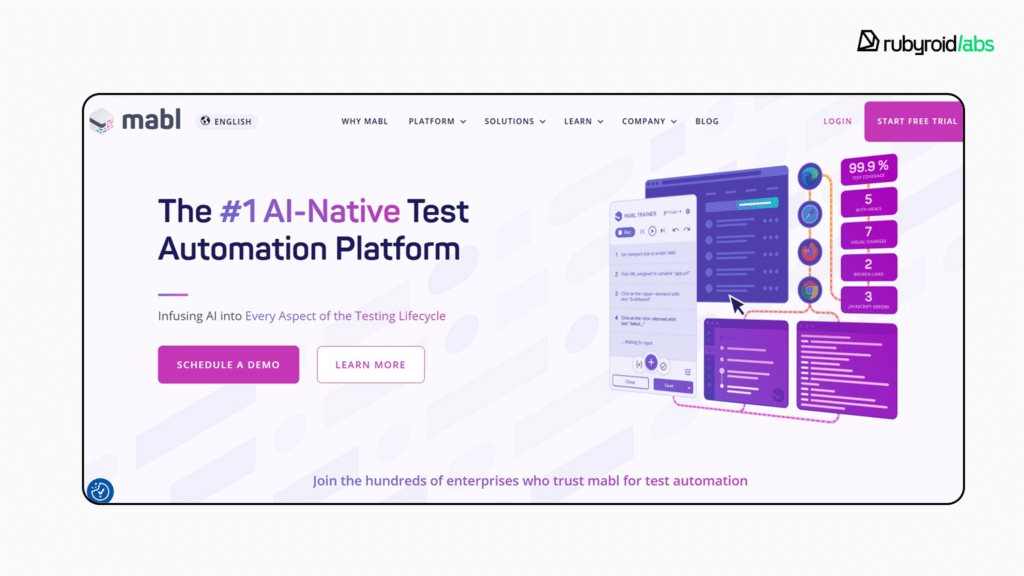
5. Debugging
Spotting problems faster and suggesting how to fix them.
When something goes wrong in the code, it can be hard to figure out what caused it. AI makes debugging more efficient by analyzing patterns in logs and user behavior to identify issues quickly.
Tools like Sentry and DeepCode uncover this perfectly. They spot potential problems and suggest fixes in real-time, helping prevent bugs before they impact users.
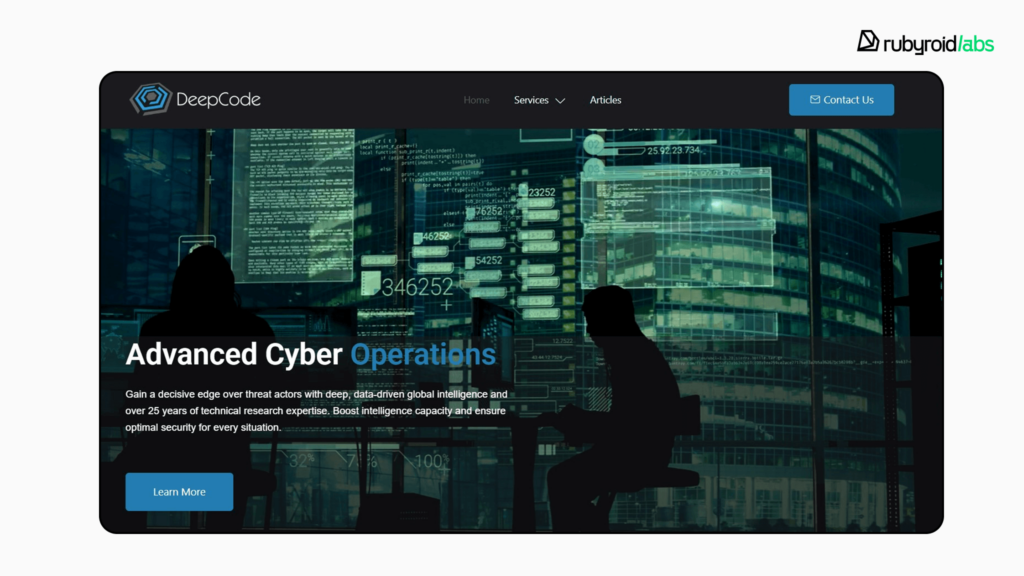
6. Deployment
Making software live smoothly and safely.
Deployment is the process of releasing software for users to use. AI can help make this process easier by spotting possible problems before they happen, choosing the best way to roll out updates, and setting up the needed systems automatically.
Tools like Harness use AI to check if a new update is causing issues. If something goes wrong, it can automatically switch back to the previous working version—saving time and avoiding downtime.
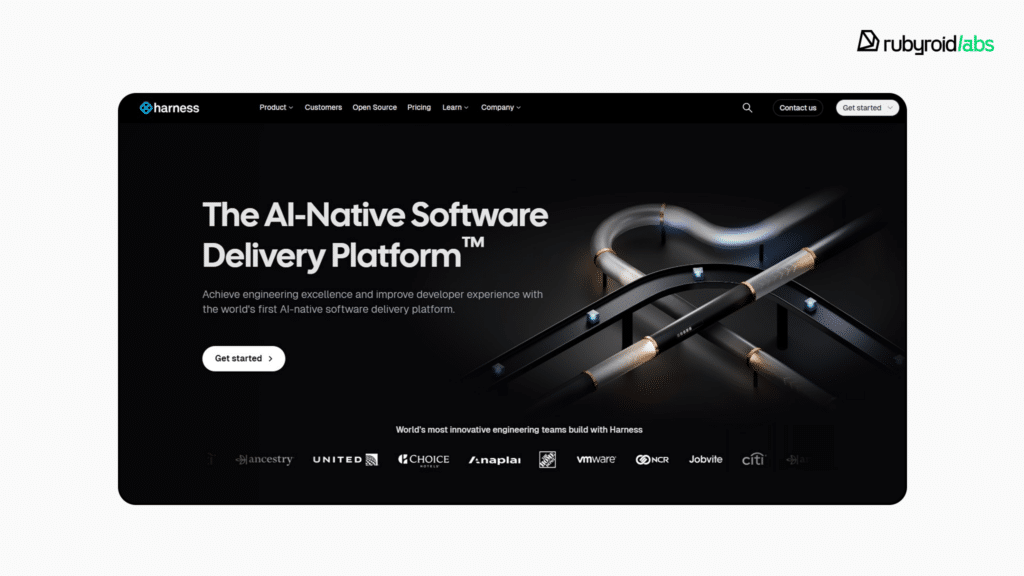
7. Monitoring & Maintenance
Keeping everything running smoothly after launch.
Launch day isn’t the end of AI’s role. It can be used to keep an eye on the live system 24/7, from tracking performance and user patterns to detecting potential security risks. The dev team gets immediate notifications about any concerning patterns, enabling quick responses to potential issues.
Thus, Datadog and New Relic use machine learning to monitor infrastructure and application performance. They can detect anomalies in traffic, memory usage, or response time before customers notice.
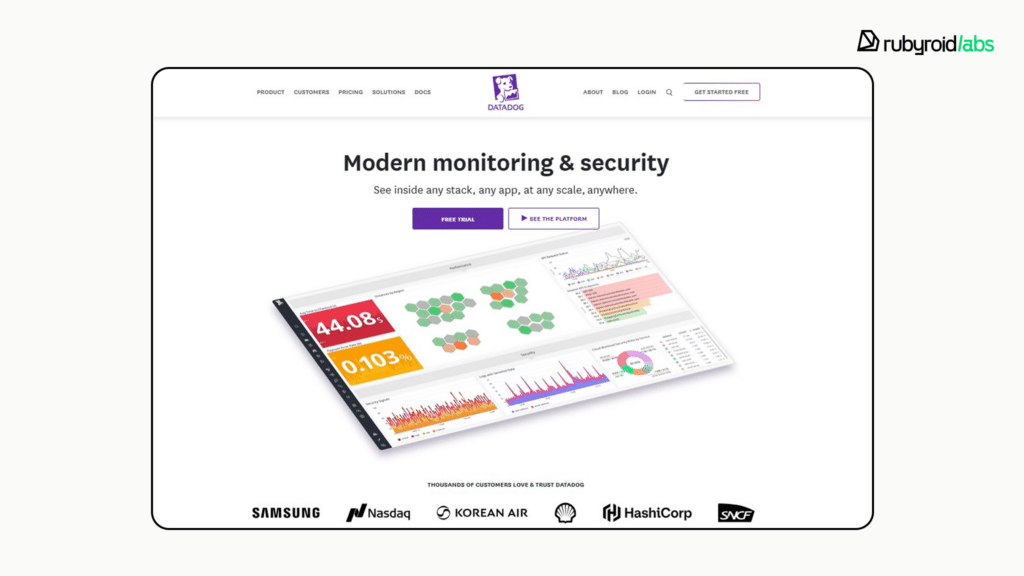
As you see, AI is becoming a reliable partner in software development. It may not handle the entire process on its own, but it can make each stage smoother and more focused. This is actually one of the key pluses of using the smart assistants.
At Rubyroid Labs, we maintain open communication with our clients and align on the tech stack and tools before starting development. If you prefer not to use AI tools, we’ll stick to the traditional development approach.
Beyond using AI tools in our own development process, we have extensive experience in providing AI integration services across a variety of industries, including e-commerce, e-learning, sports, fitness, insurance, and more. So, if you’re thinking about enhancing your app with artificial intelligence, we’re ready to advise you on how to do it right.
Contact us to discuss your ideas and get a project estimate.
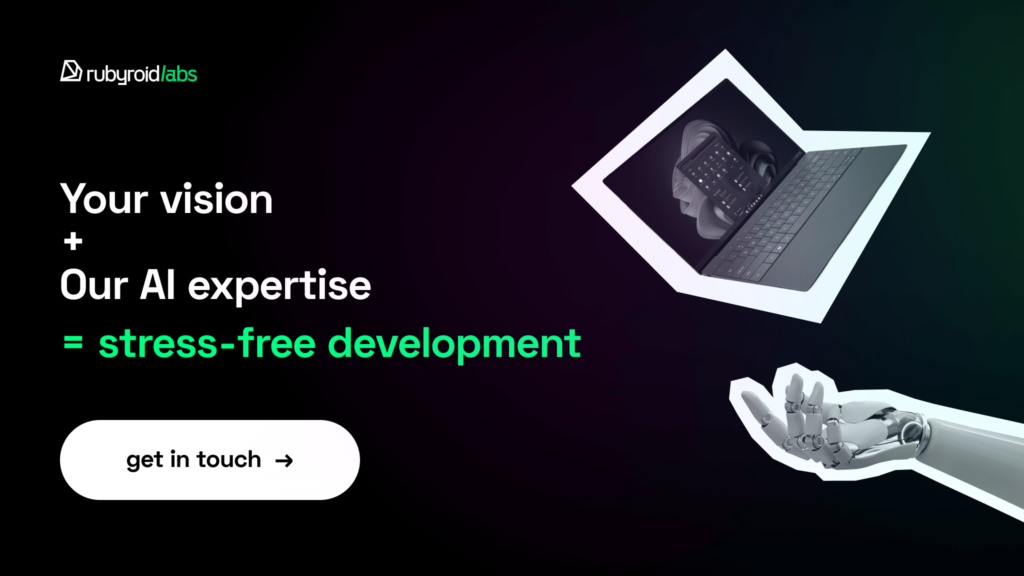
Benefits of AI in Software Development
As a project owner, you want top-quality results such as robust code, clean architecture, and fast delivery. AI helps achieve all this by accelerating development at every stage while maintaining high standards. It’s like having an extra team member focused on efficiency and quality, and its help is beneficial.
Let’s sum up and discover other benefits of using AI.
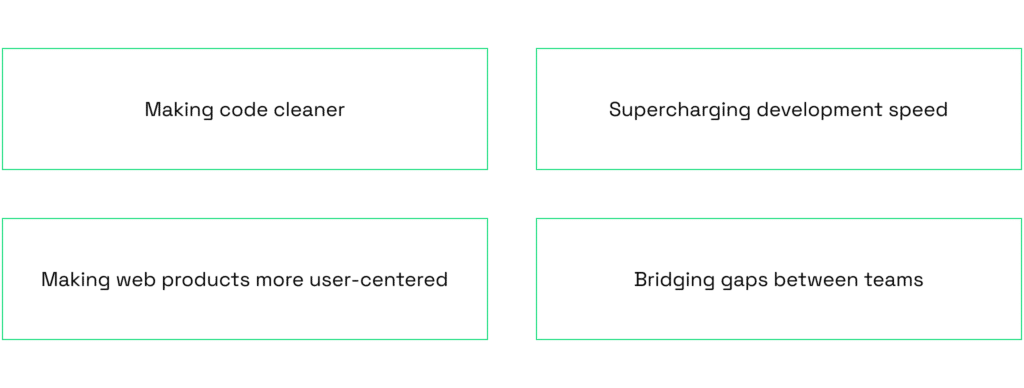
Making The Code Cleaner
AI keeps your code in perfect shape automatically, like having a 24/7 code quality expert on your team. It handles everything from consistent naming to smart structural improvements, making your software easier to maintain and update. Less time fixing old code means more time building new features.
Supercharging Development Speed
All team members can work faster without cutting corners: writing code more quickly, running tests efficiently, and keeping things moving.
That means shorter timelines, fewer delays, and quicker launches, which is good news for the timelines and goals.
Making Web Products More User-Centered
With the help of AI, designers can dive into more user scenarios and come up with fresh, creative ideas to make products feel friendlier and easier to use. AI can learn what users like, tailor interfaces to their tastes, and offer suggestions that truly matter to them.
When the user experience improves, people enjoy using the product more, stay engaged longer, and keep coming back.
Bridging Gaps Between Teams
AI plugins make collaboration between designers and developers smoother by translating design files directly into clear, easy-to-use code and detailed specifications. These plugins produce tidy HTML and CSS code and pinpoint essential design elements such as spacing, typography, and color schemes, helping maintain consistency throughout the project.
As a result, the handoff process becomes faster and simpler, allowing teams to accurately implement designs right from the start. This means fewer revisions, less confusion, and ultimately, a better final product.

Limitations and Challenges of Using Artificial Intelligence in Development Process
AI can significantly change the way we create products. It can simplify workflows, speed up tasks, and inspire fresh concepts. However, it’s crucial to keep in mind that AI isn’t entirely reliable on its own. For example, when it comes to writing code, developers still need to carefully review and apply their expertise and judgment.
With that in mind, let’s explore some of the main limitations AI has when it comes to web development.
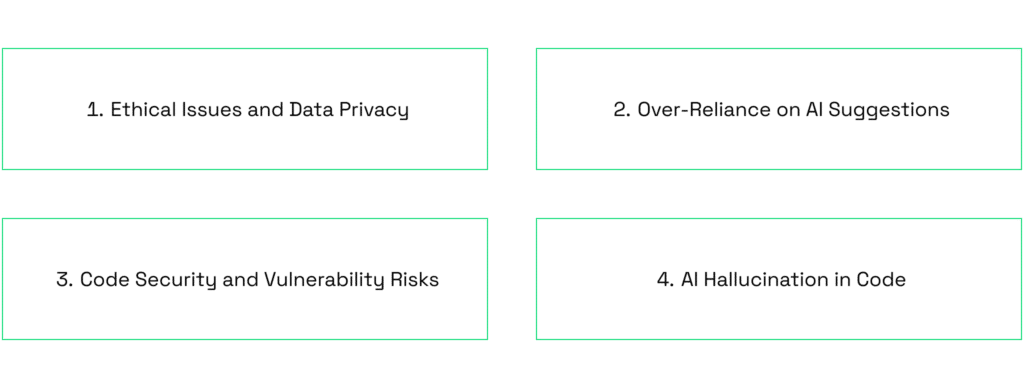
Ethical Issues and Data Privacy
AI can sometimes struggle to handle sensitive information appropriately. When you’re working with real user or company data, there’s always a chance it might accidentally be stored, mishandled, or even unintentionally shared. Unfortunately, not every AI tool clearly explains what happens to the information you provide.
That’s why it’s essential to stay alert and carefully check privacy policies and compliance standards. Keeping data safe should always be a priority.
Over-Reliance on AI Suggestions
It’s easy to get comfortable letting AI handle the heavy lifting and that comes with a risk. The more someone relies on it, the less they practice solving problems on their own. Over time, that can chip away at both confidence and skill.
This is one of the reasons we combine both traditional and AI-powered methods in software development.
Code Security and Vulnerability Risks
AI might give you code that runs perfectly, but that doesn’t mean it’s safe. It often overlooks security best practices, like input validation or proper encryption. These oversights can leave your app open to attacks without you realizing it. You’ll still need to review AI-generated code with a security-first mindset, just like you would with any junior developer’s work.
AI Hallucination in Code
Sometimes AI can confidently generate code using non-existent libraries, fictional functions, or outdated syntax. It “hallucinates” because it’s trying to guess what looks right and not what actually is right. This can be confusing and frustrating, especially when working with unfamiliar tech or integrations.
That’s why it’s essential to carefully review anything AI produces, no matter how accurate or trustworthy it appears at first glance.
AI isn’t a full-fledged team member just yet, and it does have its limits. That’s why it works best as a helpful assistant, not a replacement.
The Future of Software Engineering with AI
In this whole story of AI stepping into software development, there’s often a quiet sense of anxiety beneath the excitement.
And that makes sense.
AI has gone from autocomplete curiosities to capable code companions in less than five years. So it’s no surprise that the future feels both thrilling and, at times, a little overwhelming.
As natural language processing and machine learning continue to advance rapidly, the next major milestone is just around the corner: GPT-5 which is expected to bring even more mastery in assistance in business and software development.
But what’s really turning heads is something even more transformative: agentic AI.
We’re talking about AI that doesn’t just spit out code when asked. These agents will navigate codebases with purpose, learn teams’ styles and preferences, and make context-aware decisions. That’s a huge upgrade from today’s tools, which often hallucinate or miss the bigger picture.
Here’s what we can likely expect over the next few years:
- More Intelligent Coding Workspaces. Development tools will evolve from simple text editors into active teammates, offering real-time support for refactoring, testing, and even feature planning as you build.
- AI-powered project agents. These tools might track design decisions, manage TODOs, or even bridge the gap between code and design teams.
- Multi-agent workflows. Imagine different AIs specializing in different areas, such as testing, documentation, and code review, all working together while developers stay in charge.
- A shift in the developer’s role. Less time writing boilerplate, more time thinking strategically about architecture and user experience, and mentoring the AI teammates.
What’s Important to Remember?
Here’s the thing: even with all this shiny new tech, the most valuable “technology” in the nearest future will still be the human brain.
AI can automate, accelerate, and assist, but it can’t empathize, adapt to nuance, or understand context the way people do. It doesn’t feel uncertain. It doesn’t have instincts. And it certainly doesn’t wake up at 3 a.m. with a breakthrough idea about that feature you couldn’t figure out yesterday.
So yes, the future of software development is going to look very different. But it’s not a future without developers. It’s a future with better tools, bigger ideas, and more space for human creativity.
Wrapping Up
From idea to deployment, artificial intelligence acts as a helpful partner in software development. It speeds up workflows, reduces repetitive tasks, and supports developers in meaningful ways. It helps with code generation, testing, debugging, documentation, and even translating business needs into development-ready tasks.
And what’s most important, it’s not replacing developers but empowering them.
However, AI is still not perfect, with its limitations in hallucinating, security risks, data privacy concerns, and a tendency to oversimplify complex choices.
So, here it’s important to keep in mind that it’s a great assistant and not an autonomous engineer. That’s why the smartest teams are combining AI capabilities with human judgment, keeping developers in the driver’s seat.
If you want to build your product the traditional way or prefer to conduct AI-assisted development, we’re open to the conversation.
Since 2013, we’ve delivered over 300 successful projects, and we’d love to hear about your idea. Let’s start discussing your project right away.
